The graphic design domain experiences a time of modernization, mainly motivated by the prevalence of Augmented Reality (AR) and Virtual Reality (VR). In 2024, the AR and VR market is expected to grow to be worth $296.9 billion, as it shows a very rapid expansion.
AR and VR are expected to significantly revolutionize designers’ work by 2025. A study by Deloitte stated that 88% of mid-sized companies are making significant investments in AR and VR technologies.
Designers’ work will no longer be confined to still images but rather will have the ability to create the unquiet and multisensory environment. The evidence collected from studies proves that 3D and AR content help in boosting user engagement up to 70%.
It is the in-depth study of the AR and VR integration which encompasses the driving forces of graphic design. As stated in a recent survey, 67% of the respondents enjoy companies employing AR/VR, so it is a necessity to designers.
Key Drivers of AR and VR Integration in Graphic Design
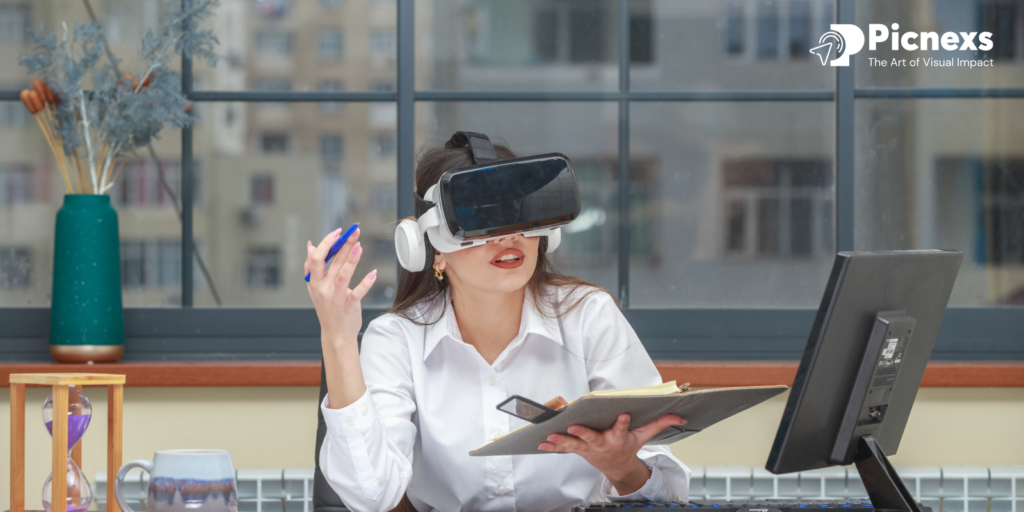
Enhanced Interactivity
Through AR and VR techniques, the users can operate the graphics as if they are in an actual virtual environment. The AR industry is foreseen to grow to a value of $198 billion by 2025, pointing out substantial growth.
To that end designers will be able to develop dynamic interfaces by creating 3D visualizations, animations and interactive software. PwC figures show that 87% of the users are highly demanding and skeptical when these requirements are not met.
Brands can exhibit augmented overlays or virtual walkthroughs to their products, thus evolving closer ties with their customers. Virtual try-ons have been shown to increase conversion rates by up to 60%.
This interaction transforms the user’s perceptions and attitudes towards digital content. Immersive experiences increase brand recall by 70%, thus, they are the new creatives/creators.
Real-Time Customization
With AR, designers are capable of including real-time, user-specific data to personalize user experiences. 61% of consumers are more likely to make a purchase if they can visualize products via AR.
Take e-commerce, for example, where users are able to visualize products in their homes through augmented overlays. AR shopping experiences may increase conversion rates by up to 40%.
VR is the thing that enables the simulation to enable the full experience of a simulation in which users can stage entire environments like setting a dream house. 84% of consumers feel more connected to brands offering immersive VR experiences.
This customization improves user’s satisfaction, it also comes as a way of making the communication with the brand stronger. 70% of customers expect companies to offer personalized experiences.
Emerging Tools and Platforms
The introduction of advanced products like Adobe Aero to create animations and Unity to build VR has made AR and VR development easier to do. The AR/VR market is predicted to hit $296.9 billion by 2024.
Tools like Blender, Vuforia, and Unreal Engine are not only for graphic designers but also for technical experts. According to a PwC survey, 64% of firms have noted higher task efficiency because of AR/VR.
It will be impossible to imagine any creative process without AR and VR by the year 2025. The correct figure is 70% of marketers who have reported greater customer interaction through AR.
With the advancement of these tools and the implementation of usability design, interaction ideas will be utilized by companies across the board. 88% of companies expressed their commitment to AR/VR and would allocate money up to 2025.
Impact on UX Design Principles
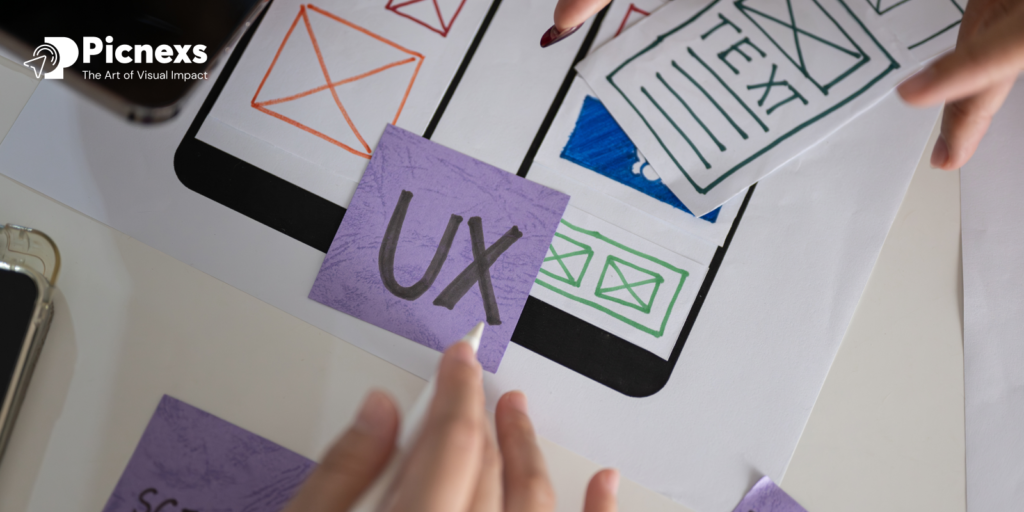
3D as the New Standard
The move from 2D to 3D design is one of the most significant changes in the principles of UX design. The global market size of 3D design software is $8.1 billion in 2025.
Old-fashioned layouts will become interactive three-dimensional models that give users a three-deepe issue. The research findings indicate that it is up to 70% of user engagement enhancement through 3D visualization.
AR and VR have become the top 3D design tools through the full immersion of users. Actually, the market of AR/VR is projected to reach $296.9 by 2024, making it the main player in the world economy.
The new trend requires different skills that include spatial design and 3D modeling. 46% of the designers either began or are planning to launch a 3D design training program to keep up with the increasing demand.
With the help of AR and VR, 3D graphics go beyond mere display and may be actually tried out, being altered in real time. 80% of the interviewed participants claim a better understanding of the products and their features through virtual reality and augmented reality environments, as found in the study.
It is an undeniable fact that 3D design will be more and more widely used – from interactive product demonstrations to the realms of virtual reality. 61% of marketers are convinced that three-dimensional experiences are more effective in terms of brand perception and customer satisfaction levels.
Accessibility First
Through the adoption of AR and VR technologies, universal accessibility and inclusivity are paramount. According to WHO’s data, it is estimated that there are over 1 billion people with disabilities in the world.
Designers should create interfaces for all kinds of people’s needs. The report by the Accenture company demonstrates that 61% of consumers prefer to interact with brands that offer such experiences.
The use of AR and VR can be demonstrated through the provision of real-time help, such as navigation aids which can be applied for the visually impaired users. Many users can utilize features like object recognition through AR that will help them to interact with the world around them.
The most important thing in accessibility is to allow users to feel and hear messages. According to the National Federation of the Blind, there are 7.6 million Americans in the country who have significant limitations of vision.
Visionary feedback in VR has the potential to reproduce these effects that are experienced through touch, providing a realistic view for those who are sensory disabled. Accessibility to immersive shared experiences will be assured by design strategies that utilize multiple senses.
56% of people with disabilities mentioned the advantages of inclusive design. By utilizing AR/VR, the gamers could come up with solutions that can be appreciated by people with physical, as well as neurodevelopment challenges.
User-Centric Interfaces
Augmented reality and virtual reality are changing the game in terms of how digital and physical environments interact with humans.
Motioning through the development of these tools, the task of designers becomes to pay attention to the navigation systems that are friendly and intuitive to the users so that they can effortlessly transit the digital world to the real one.
Transitioning effortlessly would be a plus, letting people have the whole trip from one point to another by merely clicking the screen, playing with virtual objects or just navigating in the real world.
This seamless user experience is essential for the widespread adoption of AR and VR.
How AR and VR in UX Design Are Revolutionizing Key Industries by 2025
E-Commerce
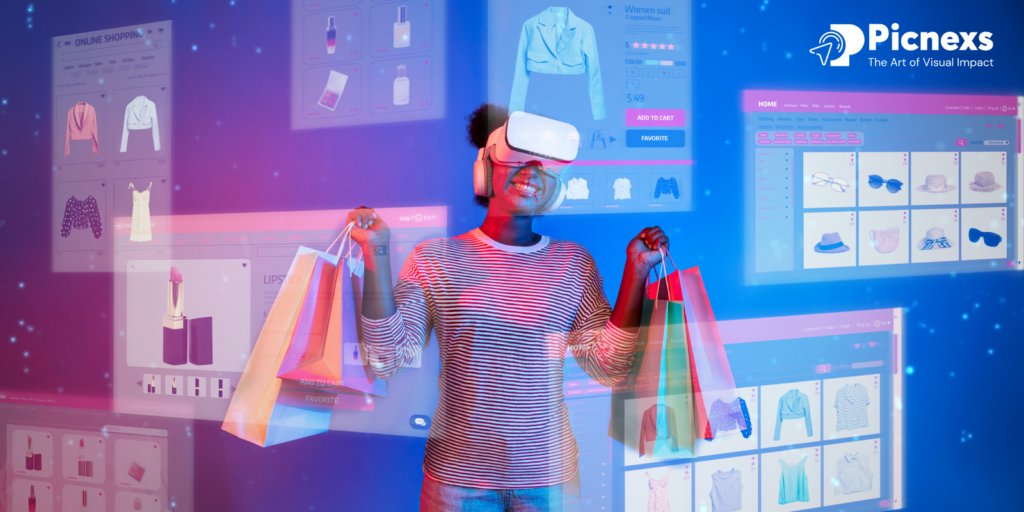
Online shopping is at the front of the rise of AR/VR and is therefore the epitome of AR/VR adoption. However, it is already revealed how AR is integrated into the shopping scene. For example, Statista claims that 31% of shoppers in the United States utilize AR to choose a product.
Nowadays, such sites that allow users to see and try out products in real-life settings are being packed by many. After a more recent survey, the result is that 61% of customers would rather have AR brands for shopping.
With the help of AR to engage furniture visualization and virtual try-on services, the fashion sector is also benefiting from this technology. But this is just the tip of the iceberg. The Nielsen study has shown that 40% of customers would be ready to pay more for a product if the AR capabilities are great.
AR/VR anchors the transformation of e-commerce and is now pivotal in terms of interactivity and visual immersion in shopping. Customers are no longer hesitant to shop online, as the product is more concrete and confident. Virtual product presentations using AR can increase the conversion rate up to 70%.
How AR/VR Are Revolutionizing E-Commerce
AR/VR act as disruptors in e-commerce through the development of immersive and interactive shopping experiences. Here’s how they’re being used:
- Virtual Try-Ons: Augmented reality technology gives buyers a chance to try clothing, accessories, or make-up virtually before buying. Retailers such as Sephora and Warby Parker use AR to empower users to visualize how products will look on them in real time.
- Product Visualization: AR provides the opportunity for users to see how home furniture, decoration, or any other products will look like in their environment. The AR app IKEA developed allows customers to place virtual furniture in their homes to determine fit and style before making any purchases.
- Virtual Stores: VR creates the ‘virtual stores’ that buyers can access to shop the products as they would if they were at the physical store. Brands as Tommy Hilfiger and Gucci are introducing the virtual reality concept in their offer to provide shopping experiences to customers who stay home.
- Interactive 3D Models: Augmented Reality is the technology that customers can use to explore 3D models of products and it is the technology that has revolutionized the shopping experience by making it more interactive. For instance, automotive and real estate are just two of the sectors, where customers can take a very close look at the products before they make a purchase.
- Enhanced Customer Engagement: Companies that use AR and if available VR can develop interactive, engaging experiences, such as virtual scavenger hunts or contests. This makes the customer more loyal and involved in the process.
- Personalized Shopping: The use of AR tech allows for unique and customized consumer experiences, from making shopping lists more straightforward through recommending products through visual analysis or with reference to their previous purchases.
The use of AR and VR in e-commerce is growing rapidly with 61% of consumers wanting to shop only with businesses offering the AR experiences and the AR market in retail is expected to reach $8.8 billion by 2025.
Education and Training
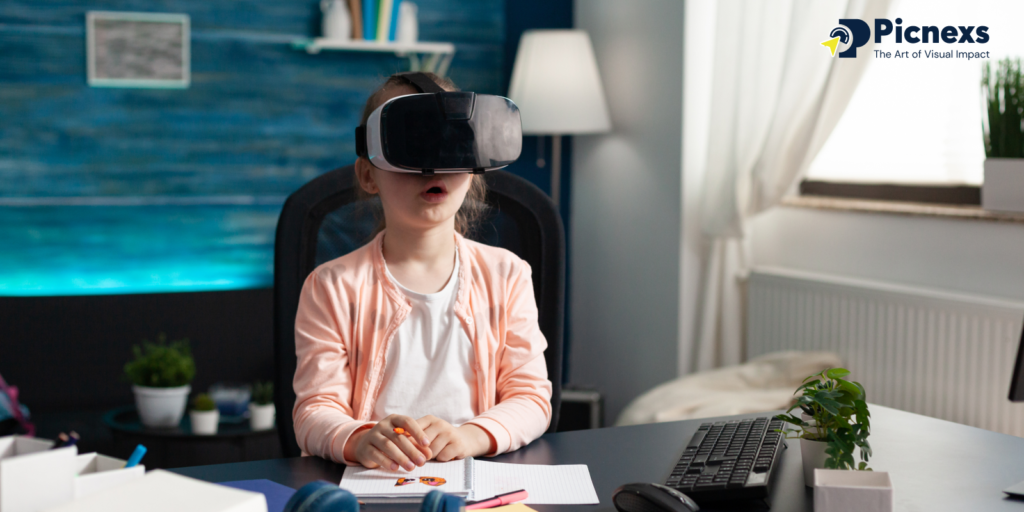
In education and training, AR and VR as well are already used to change the existing situation by creating a whole new kind of learning experience. In the PwC research, it was mentioned that workers trained in virtual reality are 4 times more engaged than those on traditional courses.
These fantastic tools give students the opportunity to understand abstract concepts through interactive lessons. A report from Statista forecasts that the AR educational global market will amount to $5.3 billion by 2025.
The staff can try out hypothetical situations of real life in the virtual world without any risk. Virtual training has been confirmed to be 75% more effective in keeping information than the traditional 10% in the case of the latter method.
Between the medical field and the industrial sector, lithodes and virtual spaces reinforce the learning results. The world market for healthcare is projected to be a huge sum of $3.8 billion by 2025 which refers to the fact that it really is a great new technology.
How AR/VR Are Revolutionizing Education and Training
- Interactive Learning with AR: AR permits scholars to direct 3D models, see the subject in a real situation that changes in real-time. Therefore, students benefit from this technique of trial and error to comprehend such tough topics.
- Simulated Real-World Scenarios with VR: Thanks to VR, the virtual area becomes the training ground for the implementation of the new technologies in healthcare and aviation. The participants may carry out safety training without fear of the consequences.
- Remote Learning via AR/VR: In this way, the e-learning frameworks are upgraded and a learning-from-anywhere culture is established by these virtual classrooms. But, they can still join such classes although their physical location might be different.
- Real-World Applications in Training: Additionally, AR and VR also enable students to practice virtually on machines and equipment. The students will build practical knowledge through the active participation of these simulations.
- Increasing Immersion for Engagement: Research has proven that Virtual Reality applications advance memory retention up to 75% compared to traditional learning methods. Immersive environments empower learners to actively participate by enhancing their motivation and concentration.
- Adopting Innovation in Education: Augmented Reality (Ar) and Virtual Reality (VR) are new technology implementations enabling special students to benefit from a multisensory approach to learning. This in turn offers an equal learning opportunity to every learner no matter the differences in their learning methods.
It is thought that interactive media can be used in education to provide more engaging and beneficial learning experiences, great for universities, and businesses to use.
Entertainment

The gaming and film industries are the top competitors in the development of all-inclusive reality. By 2025, the global gaming industry is expected to grow to 159.3 billion US dollars with VR innovations as its primary driver.
Virtual Reality allows players to experience a new level of involvement within the game while giving them the ability to squeeze in an almost direct virtual contact with the virtual environment.
A report issued by Statista is forecasting that the turnover from VR gaming will be bigger than 12 billion USD by 2025.
Similarly, AR contributes to the enhancement of live events and cinematic storytelling, thus attracting the public with a multi-dimensional experience. According to PwC, AR/VR in the entertainment industry is expected to grow at a compound annual growth rate (CAGR) of 30%.
By introducing these new technologies, creators can expand the limits of their imagination, thus opening the gate towards enthralling new entertainment experiences. There will be more than 50 million people consuming AR/VR content by 2025 worldwide.
How AR/VR Are Revolutionizing Entertainment
- VR in Gaming: VR makes it possible for individuals to take part in a game that looks as if they were in a real environment, i.e., in Beat Saber and Half-Life: Alyx. The growth of the VR gaming market is expected to rise above $12 billion by 2025.
- AR in Live Events: AR Dallas live sports events, allowing for participation of such things as statisticians, Umpires and 3D virtual reality players. The NBA uses AR to display real-time data during games.
- Cinematic VR and AR: The growing entertainment demand urges the VR technology to be manipulated for the production of augmented reality cinematic films. With VR 360-degree films being available, AR also incorporates extra layers to classical film.
- Virtual Concerts: VR the diversity of live concerts, for instance, like Travis Scott’s Fortnite event, which lured millions of viewers.
- Theme Parks: VR VR and AR create rides and experiences for parks like Disney and Universal Studios.
Through 2025, the entertainment sector will show a 30% CAGR in AR and VR technology and it will be the foremost sector of AR renaissance in the entertainment world.
Challenges of Integrating AR and VR in UX Design
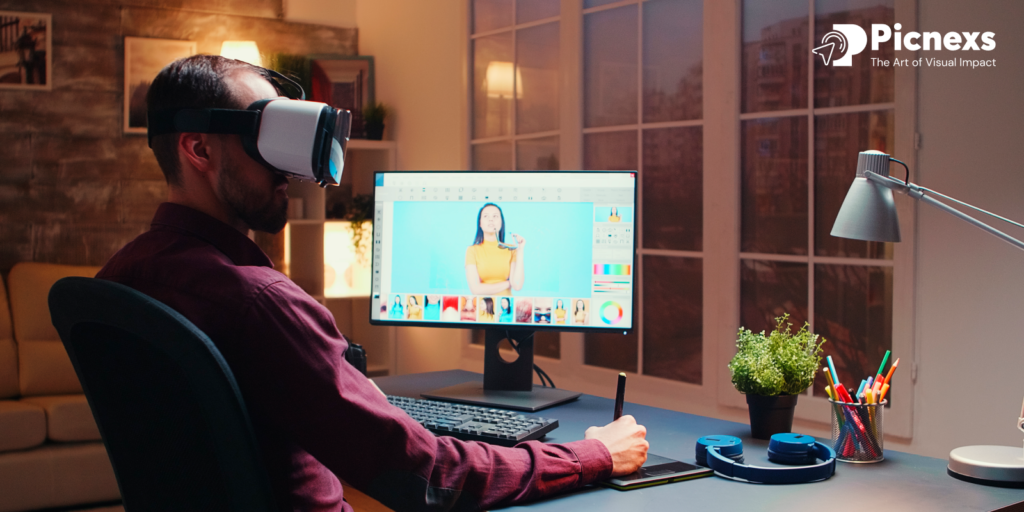
While AR and VR in graphic design brings with it uncountable opportunities given to exist with the AR/VRalso faces a number of challenges.
High Development Costs: The realization of AR/VR experiences demands the employment of certain hardware, software, and skill, which means it is highly expensive. Small studios and independent designers might ponder the economic logic of investing in such new technologies as it will be to the exclusion of other users that can be a stand competitive tool.
Learning Curve: AR and VR are still unfamiliar to a lot of designers, and it takes time to learn the required skills like 3D modeling, spatial design, and user experience in virtual spaces. The move from traditional tools to immersive platforms requires a consistent learning path and adaptation which can be daunting for some.
Hardware Limitations: VR headsets and AR devices are moving fast, but they are yet to be truly accessible, affordable, or comfortable for the user. Besides that, the designers may have to deal with the challenge of supporting the user experience on different types of devices, like smartphones, tablets, and AR glasses.
User Experience Consistency: As AR and VR propagate merged reality, navigation over these mixed environments should be as smooth as possible. The absence of standards for navigation and interaction may bring about difficulties that are detrimental to the users.
Solutions for Overcoming AR and VR Integration Challenges in Graphic Design
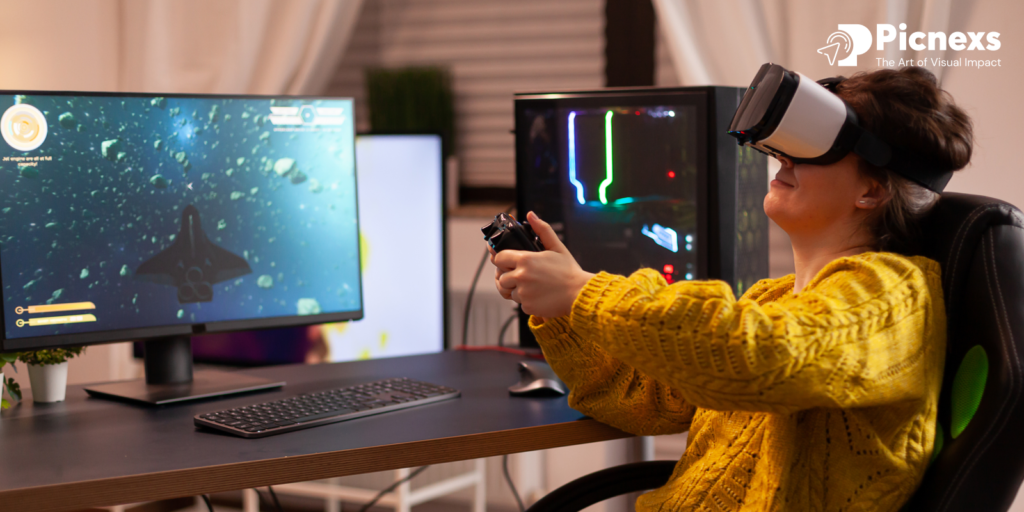
There are several ways to tackle the challenges:
Investing in Scalable Technologies: The accessibility of AR/VR tools is expected to grow as the adoption costs decrease. By opting for platforms that can be scaled with existing workflows, designers are no longer forced to take on whole AR/VR systems at higher costs but can break them down according to budget allowances.
Focused Skill Development: With graphic designers, the problem areas can be remedied through the use of online courses, tutorials, and workshops that are specifically meant for the learning and teaching of AR/VR design principles. Mentorship and gathering with AR/VR learners in conferences are excellent measures that can also help the designers to become skillful in short times.
Cross-Platform Compatibility: Addressing hardware constraints, AR/VR designers ought to explore the possibility of interoperability across different devices. This should cover the creation of mobile-based AR experiences which run on a wider range of smartphones and proper adaptation of VR content to different types of VR headsets. With the use of a range of alternative technology solutions, their scope of creative work will expand as their immersive designs will reach more.
Standardizing UX Guidelines: As the field of AR and VR design continues to progress, industry cooperation and the establishment of common UX standards will be vital. For instance, designers can ensure that their work transforms graphics into enjoyable, intuitive, and engaging user experiences by implementing best user interaction practices for immersive environments. Furthermore, field testing of AR/VR will help to fix issues and come up with products that perfectly match the real-world needs.
Customers are provided with these solutions that enable the designers to face the challenges of integrating AR and VR, to come up with specifications, which in return become innovative experiences which redefine the graphic landscape consequently preparing them for the immersive future.
Preparing for the Future of AR/VR in Graphic Design
Upskilling Designers
With AR and VR becoming the focal point of UX design, it is necessary for designers to get immersed in 3D modeling and spatial design. In the next five years, half of the employees will need reskilling due to emerging technologies.
The mastery of HCI interaction is the best thing that could happen to the future designers. According to the PwC’s study, 78% of the companies will invest in immersive technology learning.
The novelty of some tools such as Unity and Unreal Engine lies in the creation of AR/VR experiences. It is expected that in 2025, the openings for AR/VR developers will rise by 46%.
The collaborative approach will be essential due to the fact that AR/VR projects involve the participation of professionals from different disciplines. One of the reports says that multi-functional teams are able to work 25% more efficiently, when they are found.
Collaborative Workflows
AR and VR projects usually bring together a team of different professionals such as developers, UX researchers, and content creators. The PwC confirms the fact that 70% of cross-functional teams in VR and AR projects lead to the successful completion of the projects.
Fleshed out with different fields of expertise, these projects need skills with which people could integrate the given elements, such as design, technology, and content. Great teamwork stimulates innovation, with most of the workers (85%) believing that collaboration is a key element in inspiring new ideas. Ideo-based study.
Successful collaboration and communication are the winning tale that will help to ameliorate unity and achieve the much needed cohesion. Companies that grow at a rate of 25% can be said to be among those that are focusing on boosting collaboration management. McKinsey’s research.
Tools necessary for team coordination, shared prototyping, and live response are required. A study by Forrester reveals that 57% of enterprises plan to join the use of real-time collaboration tools.
Using the cloud will also speed up the work. As Gartner’s research indicates, the cloud’s acceptance in collaborative projects jumped from 40% in 2019 to 2023, being one of the most efficient practices across the board.
Investing in Technology
Organizations should also provide for the purchase of AR/VR hardware, such as headsets and controllers. It is anticipated that the world market for AR/VR hardware will increase from $11.5 billion in 2022 to $46.8 billion in 2027.
Advantages of these technologies to businesses will be quicker to be noticed by them. They will be in the AR/VR space for enhanced customer loyalty, and competitive reasons similar to 43% of PwC’s reported companies.
Investing in AR/VR software tools for development and deployment is also necessary. The AR/VR software market is set to reach $6.1 billion in 2021 to $40.4 billion by 2026.
These investments will intensify user engagement and foster operational efficiency. According to Accenture’s study, AR/VR may contribute a total of $1.5 trillion to the world economy by 2030.
Conclusion
In the next few years, AR and VR, not alternatives but the main ways for digital design, would become core entities in traditional design facilities. The graphic design industry is standing on the threshold of an immersive revolution, where the lines between creativity and technology disappear. Designers who come aboard with the game will gain extra space, creating the effects that reach to the hearts of their consumers. The new age of UX design is right here and it is universally attractive and engaging as the very technologies powering it.

Leave a Reply